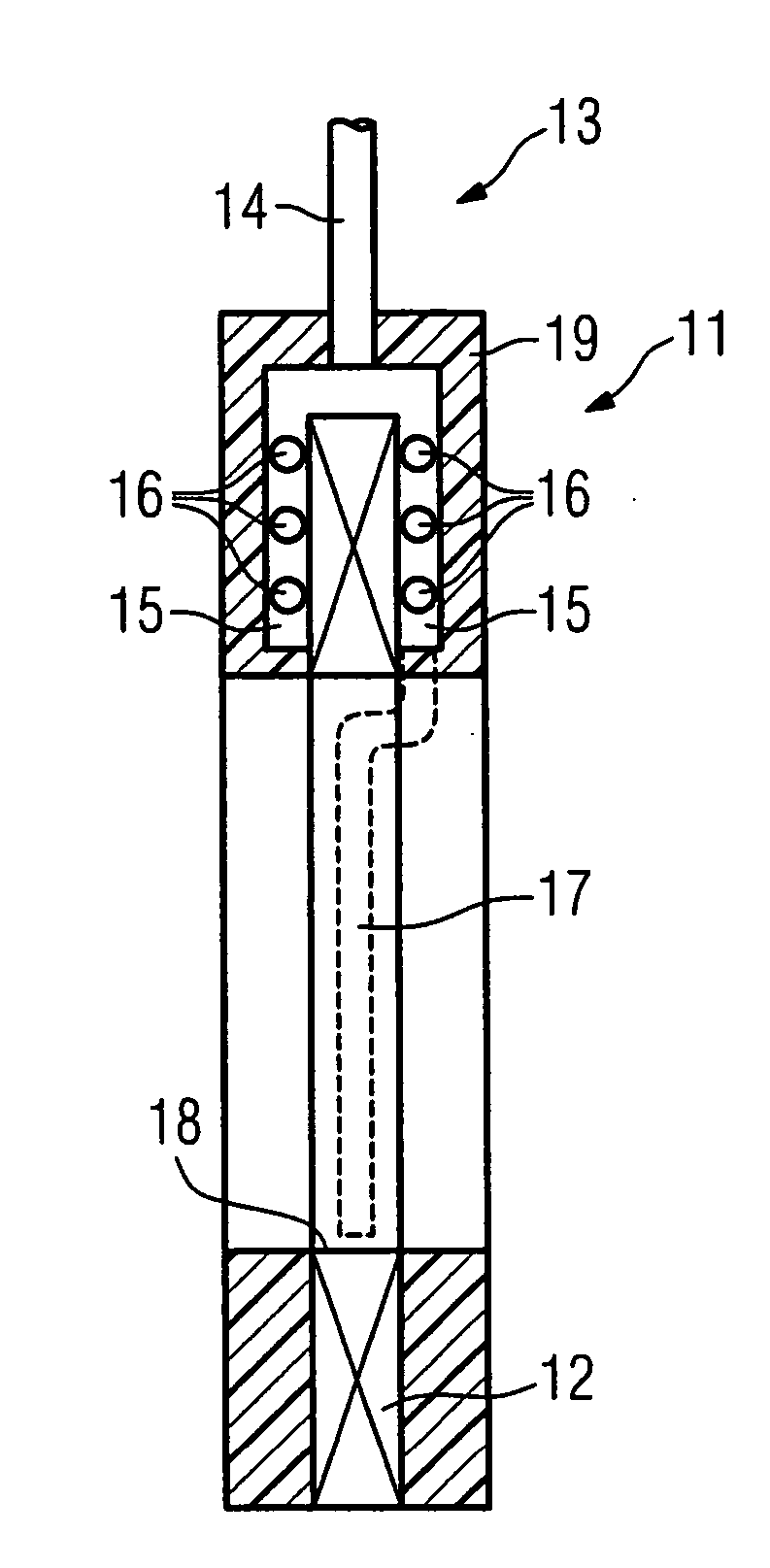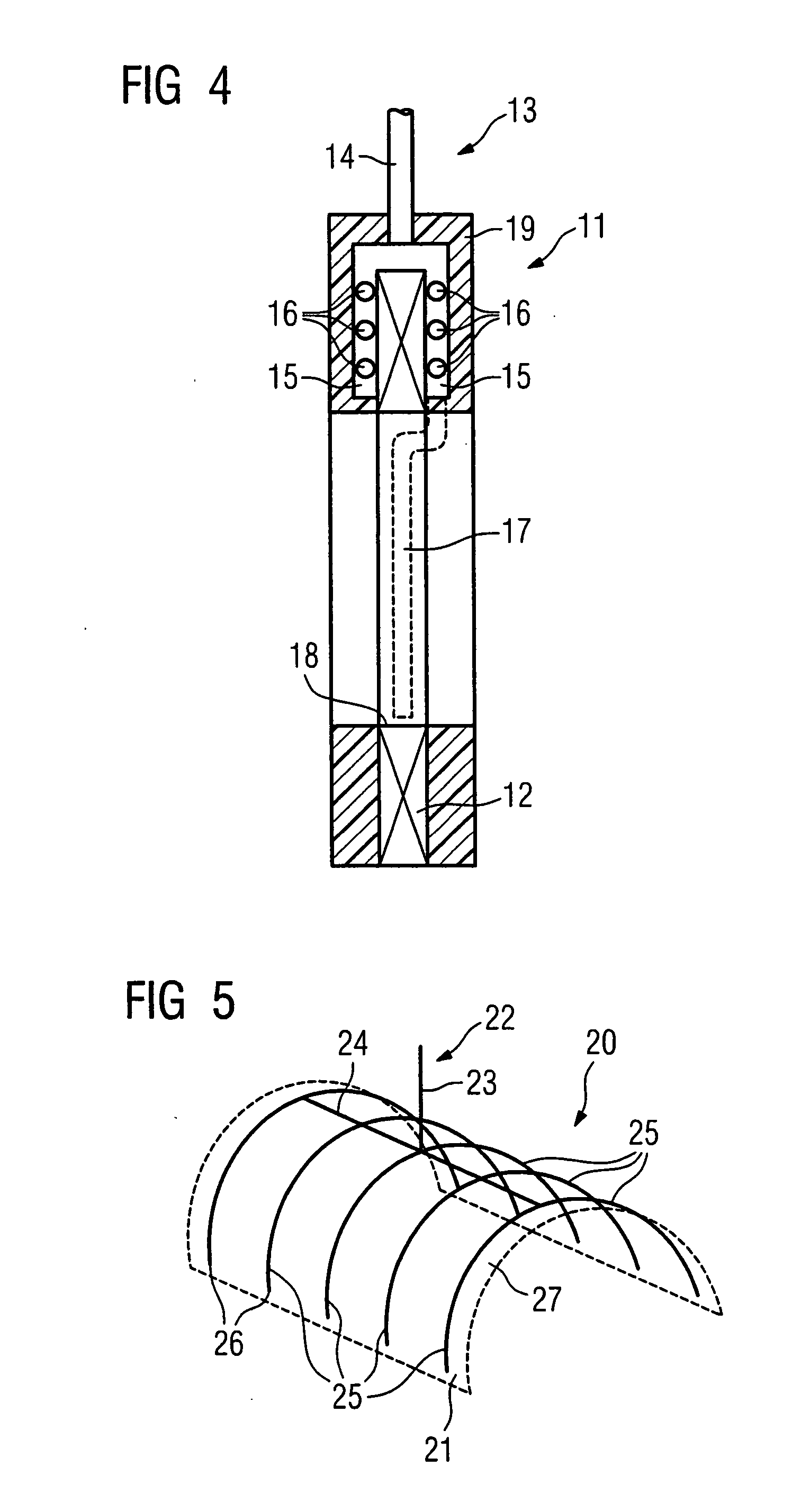Device for generating a pulsed magnetic field
a pulsed magnetic field and device technology, applied in the direction of magnetic circuit rotating parts, magnetic circuit shape/form/construction, instruments, etc., can solve the problems of large eddy current in all metal components, unsatisfactory pressure build-up in the cryostat, and significant increase in the cold mass
- Summary
- Abstract
- Description
- Claims
- Application Information
AI Technical Summary
Benefits of technology
Problems solved by technology
Method used
Image
Examples
Embodiment Construction
[0032] Reference will now be made in detail to the preferred embodiments of the present invention, examples of which are illustrated in the accompanying drawings, wherein like reference numerals refer to like elements throughout.
[0033]FIG. 1, like all the other views, only shows details essential for the invention. A device 1 is shown, having a winding 2 of superconducting material which forms the magnet. The winding 2 is designed as a disk winding or disk coil and it may be formed, for example, by a strip 4 mm wide and 0.25 mm thick which has been wound to form the disk and which contains superconductor material, preferably high-Tc superconductor materials such as (Bi,Pb)2Sr2Ca2Cu3O. The winding 2 can of course be connected as usual via contact means (not shown in detail) to a corresponding pulse or alternating-current supply, etc., in order to generate a pulsed magnetic field.
[0034] A refrigerating unit (not shown in detail), with at least one cold head 3 located at its cold end...
PUM
 Login to View More
Login to View More Abstract
Description
Claims
Application Information
 Login to View More
Login to View More - R&D
- Intellectual Property
- Life Sciences
- Materials
- Tech Scout
- Unparalleled Data Quality
- Higher Quality Content
- 60% Fewer Hallucinations
Browse by: Latest US Patents, China's latest patents, Technical Efficacy Thesaurus, Application Domain, Technology Topic, Popular Technical Reports.
© 2025 PatSnap. All rights reserved.Legal|Privacy policy|Modern Slavery Act Transparency Statement|Sitemap|About US| Contact US: help@patsnap.com



